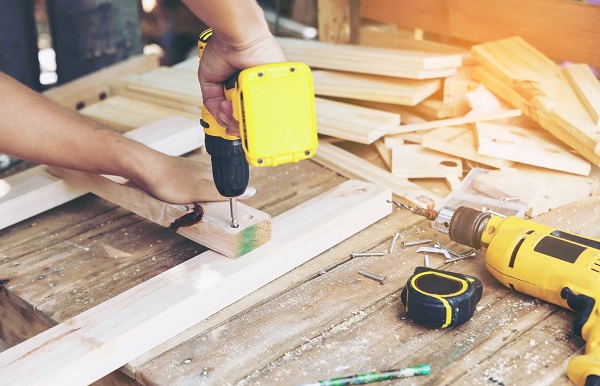Embarking on your first DIY construction project can be an exciting yet daunting experience. With proper planning, the right tools, and a clear strategy, you can transform an idea into reality while gaining valuable skills.
This guide walks you through every stage of the process, ensuring your first DIY project is successful and enjoyable.
1. Define Your Project Goals
Before starting any construction project, define what you aim to achieve.
- What is the purpose of the project? For example, building a deck, repairing a shed, or creating custom furniture.
- What’s your budget? Establish a realistic financial range, accounting for materials, tools, and unforeseen expenses.
- What’s your timeline? Estimate how much time you can dedicate daily or weekly.
Having clear goals will prevent scope creep and help you stay focused throughout the project.
2. Research and Gather Inspiration
Browse resources like YouTube tutorials, Pinterest, and DIY forums for ideas. Pay close attention to techniques, tools, and safety tips shared by experienced DIYers.
- Check local building codes: Some projects, such as constructing fences or decks, may require permits.
- Study similar projects: This will give you insight into potential challenges and creative solutions.
3. Assess Your Skills and Knowledge
Honesty about your abilities is key. Ask yourself:
- Do I have the necessary skills?
- Am I comfortable using power tools?
- Can I learn the skills I lack through research or tutorials?
If the project feels overwhelming, consider breaking it into smaller tasks or seeking advice from a more experienced DIYer.
4. Draft a Plan
A well-thought-out plan ensures efficiency and minimizes mistakes.
- Sketch your design: Include dimensions, features, and material specifications.
- List materials and tools: From nails to drills, create a detailed checklist.
- Create a step-by-step plan: Outline the sequence of activities, from preparation to the final finish.
5. Assemble the Right Tools and Materials
Having the correct tools makes all the difference. While some can be borrowed or rented, others may be worth purchasing.
- Essential tools for beginners:
- Measuring tape
- Hammer
- Drill and drill bits
- Saw (hand saw or circular saw)
- Screwdrivers
- Safety gear (gloves, goggles, ear protection)
- Materials: Purchase high-quality materials to ensure durability. If you’re unsure about quantities, consult with a hardware store professional.
6. Prepare Your Workspace
Create an organized and safe environment for your project.
- Clear the area of clutter.
- Ensure you have adequate lighting.
- Set up a dedicated workspace for tools and materials.
- Check that electrical outlets are accessible if you’re using power tools.
7. Safety First
DIY construction can be hazardous if safety protocols are ignored.
- Wear protective gear: Safety goggles, gloves, and sturdy footwear are essential.
- Handle tools properly: Read manuals and follow guidelines for using power tools.
- Stay alert: Avoid distractions, and never rush through tasks.
8. Follow Your Plan and Adapt as Needed
With preparation complete, start executing your project step by step.
- Stick to the sequence: Follow your outlined plan to avoid confusion.
- Be flexible: Challenges may arise, such as material shortages or unexpected issues. Stay adaptable and open to alternative solutions.
- Celebrate small wins: Completing each phase will keep you motivated.
9. Test and Refine the Final Product
Once the project is complete, test it to ensure it meets your expectations.
- Check stability and safety: For structural projects like furniture or shelves, verify they can bear the intended load.
- Add finishing touches: Sand rough edges, paint, or apply a sealant for a professional look.
10. Reflect and Document Your Journey
After completing your first DIY construction project, take time to reflect.
- What worked well? Identify successful strategies or tools.
- What could be improved? Learn from mistakes to refine your approach for future projects.
- Document the process: Take photos and notes, which can serve as a reference for your next venture or inspire others.
Tips for First-Time DIYers
- Start small: Choose a manageable project to build confidence.
- Seek help when needed: Don’t hesitate to ask a friend or family member for assistance.
- Invest in quality tools: They are safer, more efficient, and last longer.
- Stay patient: DIY construction is a learning process—embrace the journey.
Conclusion
Starting your first DIY construction project can be incredibly rewarding. By planning thoroughly, prioritizing safety, and maintaining a positive attitude, you’ll create something functional and personal. Plus, the satisfaction of completing a project with your own hands is unmatched.
Also Read
Safety tips for working at heights: Protecting your crew
Insulation tips: How to choose the right materials for your project

